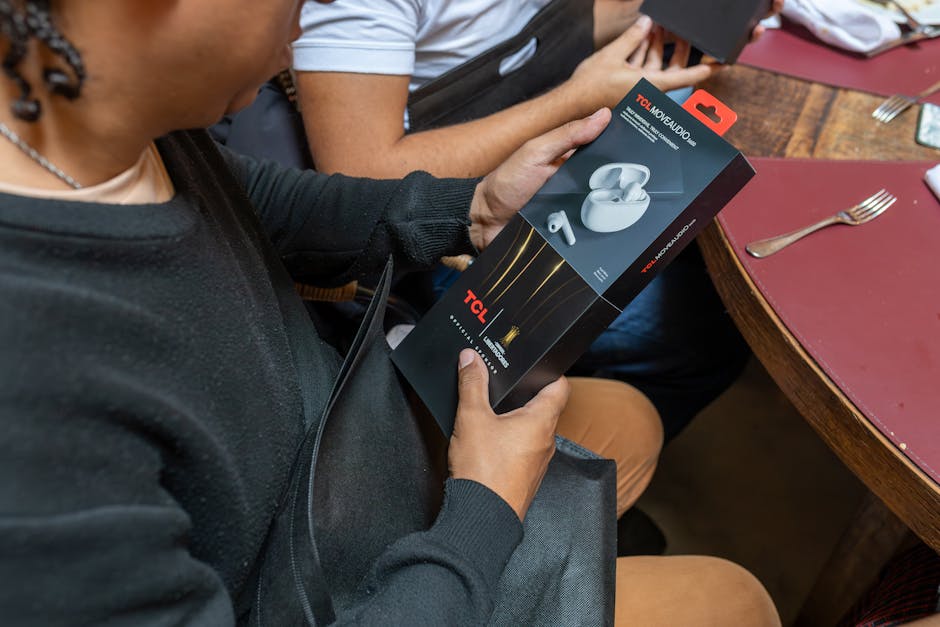Embrace Neurodiversity in Digital Marketing for Better SEO
Understanding and incorporating neurodiversity in digital marketing can unlock innovative strategies, fostering inclusion and engagement. As marketers, it’s our responsibility to create campaigns that resonate across diverse user experiences, but how can we effectively appeal to a broader audience while optimizing for search engines? Welcome to the intersection of neurodiversity and digital marketing, a space where creativity meets strategy to establish meaningful connections with diverse consumers.
In recent years, the conversation around neurodiversity has gained momentum in various fields, including education and employment. However, its significance within digital marketing remains significantly underexplored. By integrating neurodiverse perspectives into marketing strategies, organizations can craft more inclusive campaigns that cater to users with different ways of processing information and experiencing the world. This article delves into the role of neurodiversity in shaping effective digital marketing strategies, highlighting practical insights for brand engagement and SEO optimization.
Understanding Neurodiversity: A New Perspective
Neurodiversity is a term that encompasses a range of conditions, such as autism spectrum disorder, ADHD, dyslexia, and bipolar disorder, among others. Each of these conditions can influence how individuals interact with digital content and interfaces. For instance, someone with autism might prefer clear, straightforward communication, while a person with ADHD may favor more dynamic and engaging content formats. As we strive for inclusivity, acknowledging these differences is crucial in developing an effective digital marketing strategy.
By incorporating neurodiverse perspectives, brands can avoid one-size-fits-all approaches and instead tailor their content to meet the diverse needs of users. This is not just a moral imperative, but it's also a strategy with significant commercial benefits. According to research conducted by the National Autistic Society, focusing on the autistic demographic alone represents a market potential of over £270 billion in the UK, highlighting the necessity for brands to step up and craft campaigns that appeal to neurodiverse individuals.
Crafting Inclusive Digital Marketing Campaigns
Creating inclusive campaigns necessitates innovative thinking and the willingness to step away from traditional practices. Here are key strategies to consider:
1. Simplicity in Messaging and Design
For many neurodiverse individuals, particularly those with autism or dyslexia, clarity is crucial. Simplifying your messaging can significantly enhance user experience. Implementing clear headlines, straightforward calls to action, and visually appealing designs can help users quickly comprehend essential information. For example, consider the layout and design of your website. Adopting minimalist layouts—like those discussed in our post on the impact of digital minimalism in SEO—can improve engagement while catering to neurodiverse users’ preference for less clutter.
2. Interactive and Engaging Content
Neurodiverse audiences often thrive with interactive and engaging content. Consider incorporating gamification elements into your campaigns to capture attention and keep users engaged. Interactive quizzes, polls, and immersive videos can enhance understanding and enjoyment, fostering a more meaningful connection between users and your brand. This aligns with our insights on how emotional targeting in digital marketing can resonate with diverse audiences.
3. Diverse Content Formats
People process information differently, and providing a variety of content formats can cater to different preferences. Video, audio, text, and infographics—all play essential roles in appealing to users with different processing styles. By utilizing visual storytelling in videos or incorporating audio summaries in your blogs, you can enhance user engagement while ensuring everyone can access and comprehend your content.
4. User Interface Optimization

Building accessible user interfaces (UIs) is pivotal for accommodating neurodiverse users. Conduct user testing with neurodiverse individuals to identify design principles that facilitate ease of use. Providing customizable options for content display—like text resizing or background color shifts—can position your brand as inclusive while enhancing overall SEO insights.
5. Incorporating Feedback

Continuous improvement is key to any successful marketing strategy. Gather feedback from neurodiverse individuals to refine your campaigns. Surveys, focus groups, and social media engagement can provide invaluable insights into how effectively your content resonates and where improvements may be required.
SEO Strategies with Neurodiversity at the Core

While crafting engaging and inclusive content is crucial, optimizing that content for search engines must not be overlooked. Here’s how to merge inclusivity with SEO strategies:
1. Keyword Research with a Broader Lens

When developing SEO strategies, it is vital to conduct comprehensive keyword research. Use tools like Google's Keyword Planner and Ahrefs but focus not only on generic and high-ranking keywords. Dive into terms that resonate with neurodiverse communities, potentially identifying underserved niches or topics. For example, phrases like "accessible design for dyslexia" or "digital marketing for neurodiverse" might not be highly competitive but can be significantly relevant to your campaigns.
2. Structured Data and Accessibility Features

Implement structured data (schema markup) in your web content to help search engines understand the nuances of your offerings. Enhancing accessibility features, like alt text for images and captions for videos, also plays a crucial role in improving SEO and ensuring a better experience for neurodiverse users. This aligns with our article on AI-driven analytics for marketing, where intelligent data usage can also improve content targeting.
3. Creating High-Quality Content

High-quality content that addresses the needs of diverse audiences is more likely to attract organic traffic. Aim for content depth, ensuring each piece tackles multiple user perspectives. Using emotional intelligence in crafting website copy can enhance relatability while building trust with user communities. This concept is also aligned with our focus on emotional intelligence in SEO.
4. Leveraging User-Generated Content

Encourage satisfied users to generate content relevant to their experiences. This can provide a valuable layer of authenticity and relatability to your brand’s message. By sharing testimonials or engaging with user-created content on social platforms, brands can extend their reach and foster a sense of community, aligning with the principles of inclusivity.
5. Mobile Optimization

With mobile traffic representing a significant portion of online searches, it is essential to ensure your content is mobile-friendly. Conduct regular audits to assess mobile performance and make adjustments that cater to neurodiverse users who may favor streamlined experiences on their devices. Ensuring fast loading times, legible text, and touch-friendly design elements can play a pivotal role in enhancing accessibility.
Measuring Success: Analytics and Neurodiversity

To ensure that your efforts in incorporating neurodiversity are successful, rely on analytics to gauge your campaigns' effectiveness. Utilize tools like Google Analytics to track user behavior, engagement, and conversion rates. By comparing data before and after implementing such changes, you can see the tangible impacts of inclusive strategies on your marketing performance.
1. Analyzing User Behavior

Look closely at metrics like bounce rates and time spent on pages. High bounce rates may indicate that users are not resonating with your content. Use this data to tweak your approach, such as enriching content formats or revising navigation paths, ensuring a better fit for neurodiverse audiences.
2. Survey Metrics

Regularly deploy surveys to your user base, specifically designed to gather feedback from neurodiverse individuals. High response rates to your edited content or adjusted campaigns indicate improvements based on inclusivity. Incorporating user feedback into your analytics strategy will enhance future initiatives, guiding the overall trajectory of your brand’s message.
3. Social Engagement Metrics

Keep an eye on social sharing and engagement metrics. If certain types of neurodiverse-inclusive content garner more shares and comments, use this data to inform future content strategies. Learning from what resonates allows brands to be adaptive and aligns with our focus on neuroaesthetics in digital marketing.
Final Thoughts
Incorporating neurodiversity into digital marketing strategies unlocks the potential for richer, more meaningful connections with diverse audiences. By crafting inclusive campaigns that prioritize clarity, engagement, and personalized experiences, marketers can cultivate stronger brand loyalty and improve accessibility, resulting in enhanced SEO outcomes.
As you begin to integrate these insights into your own strategies, remember that the journey towards inclusivity is ongoing. Embrace the diversity of thought and experience that neurodiversity represents to drive creativity and innovation in your marketing efforts. The future of digital marketing lies in the ability to touch hearts and minds—creating campaigns that not only sell but also transform the landscape of engagement.
In the words of Merill Garbus, "Allow your brand to be seen in eclectic diversity." Let's make marketing a space where every voice matters.









